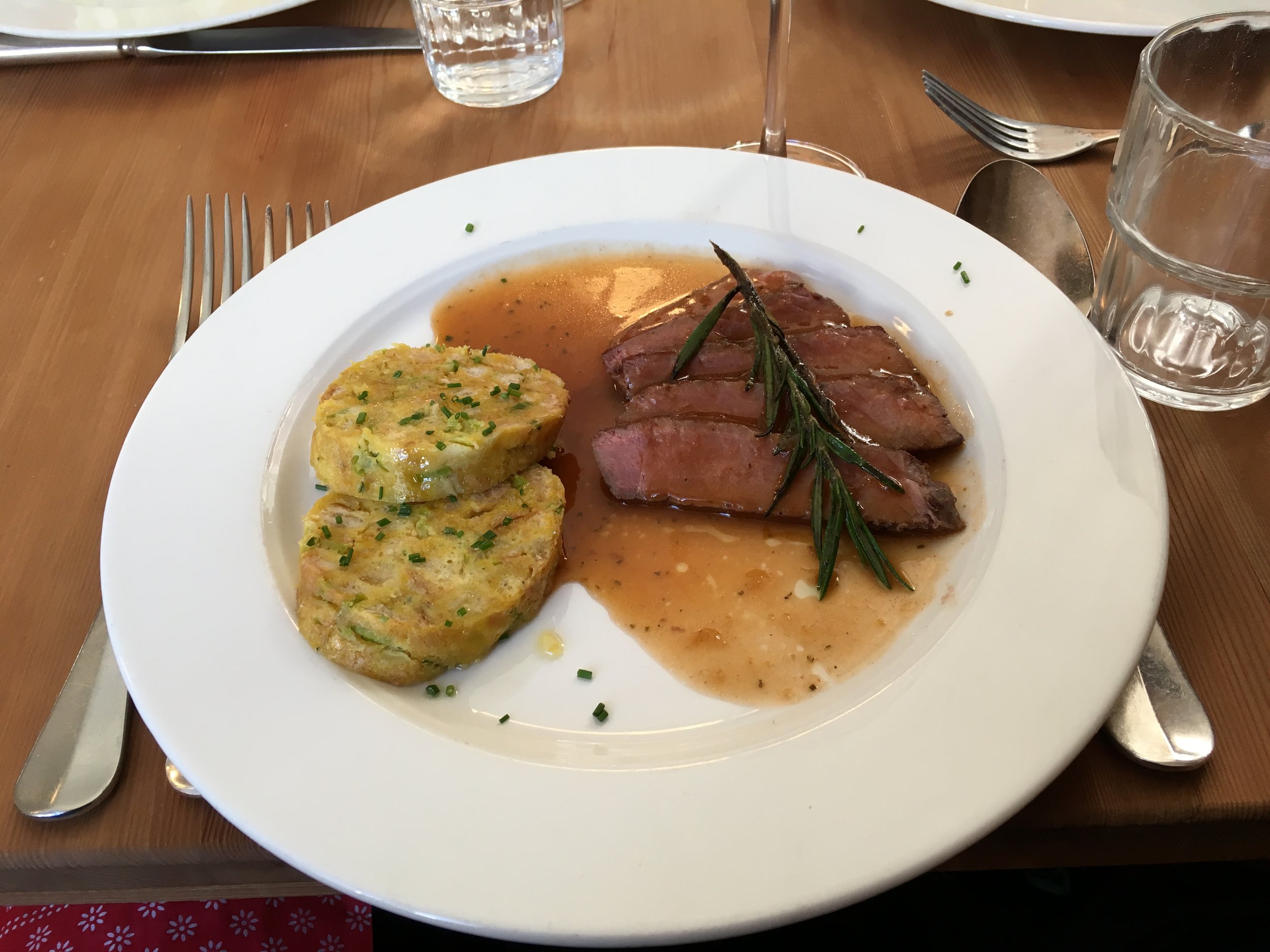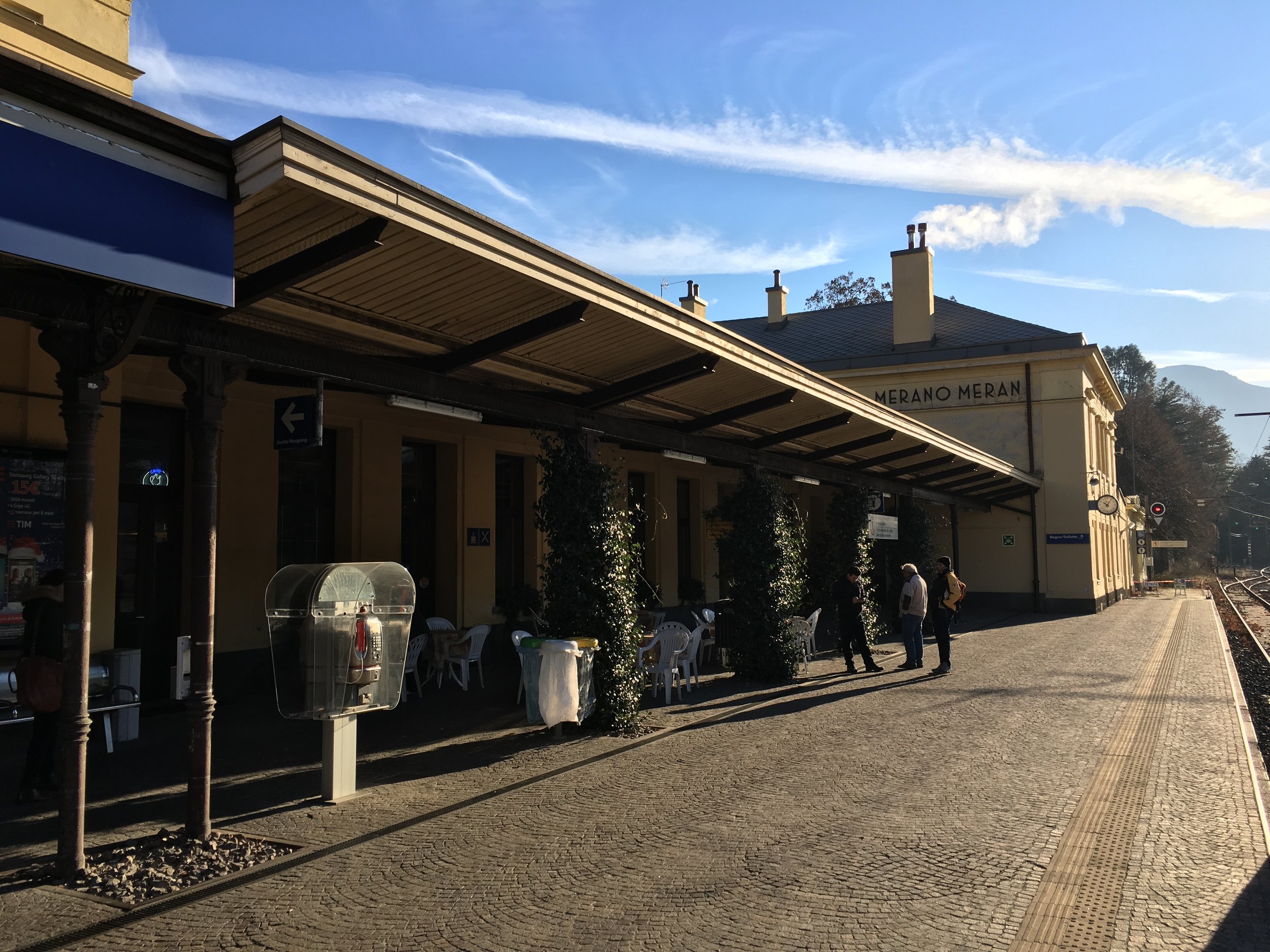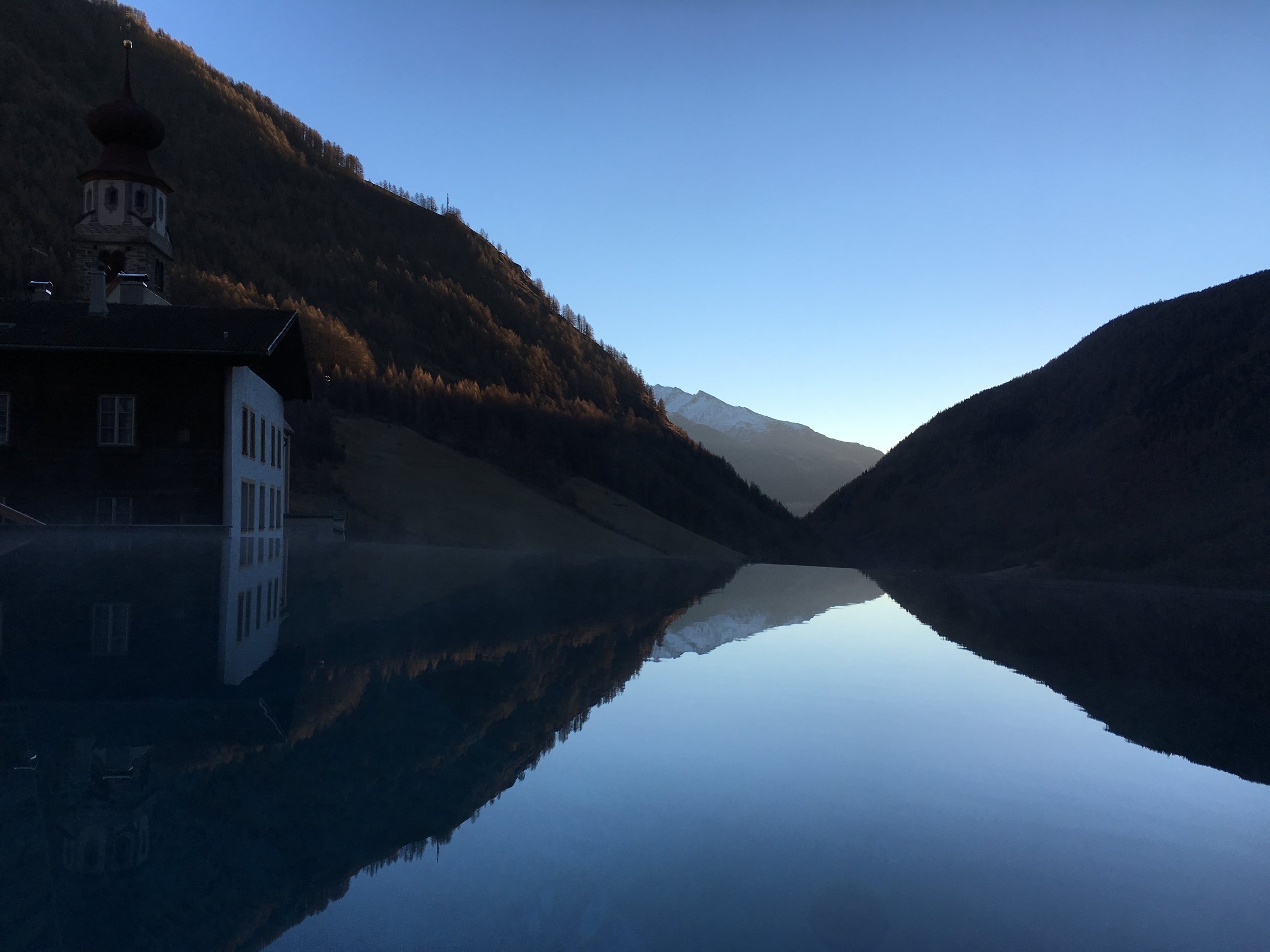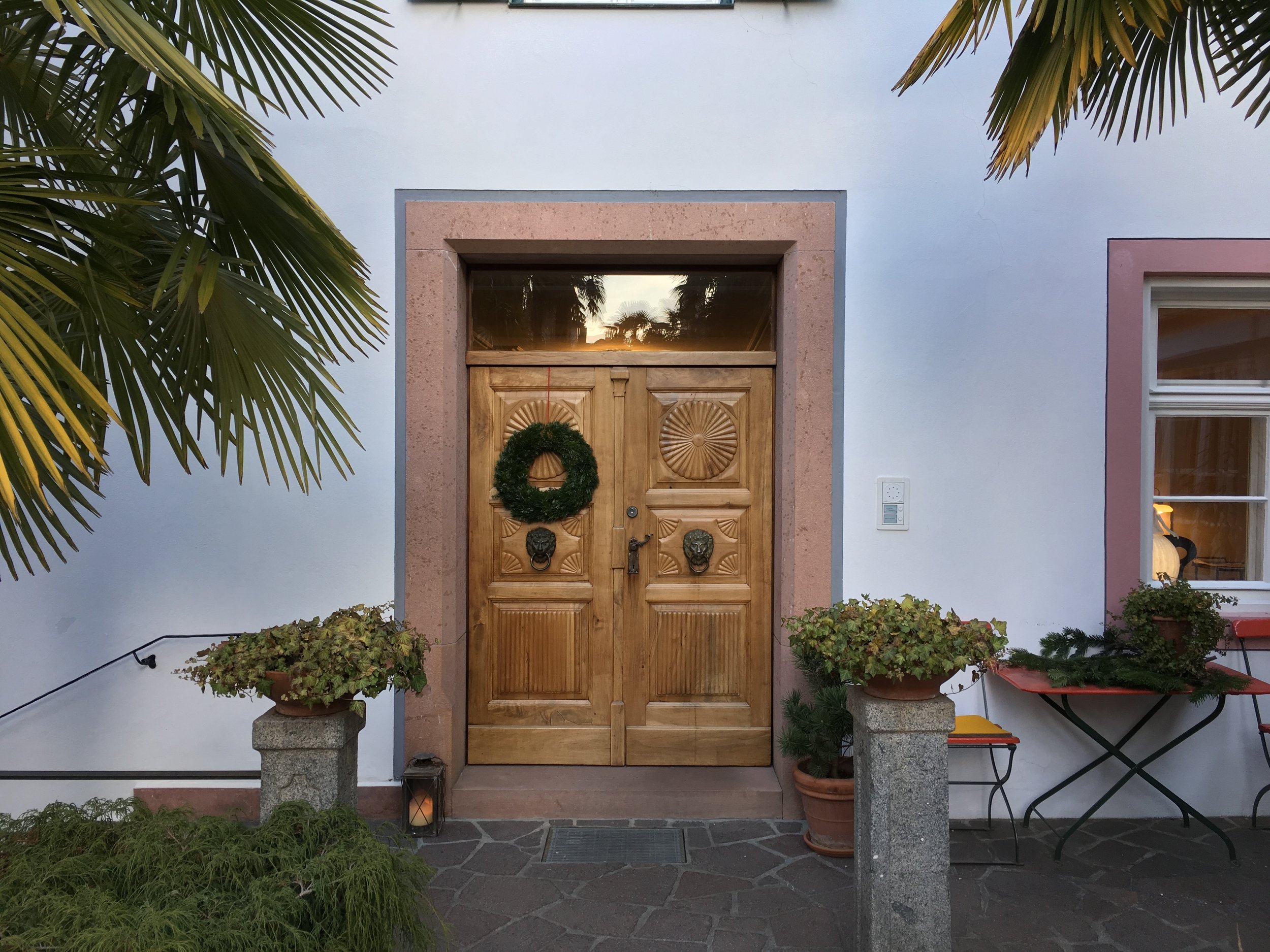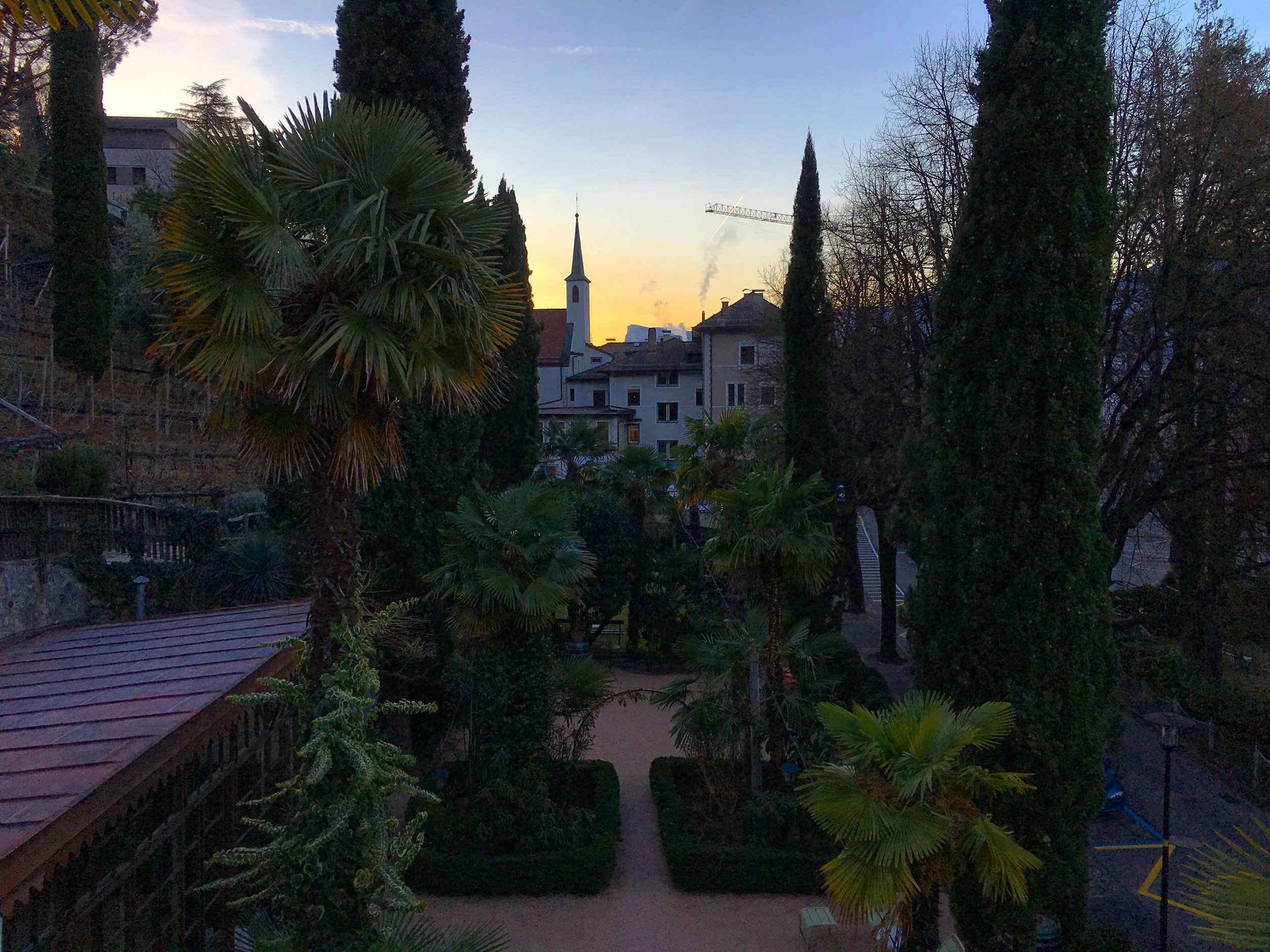An education in Knödel
Destination: Meran Region, South Tyrol, Italy
Dates: 15. December 2016 - 18. December 2016
Reason for Travel: Press Trip
Modes of Transport: Train, Bus, Car
Meran Bound
Our first trip abroad takes us through beautiful Graubünden to the Italian province of South Tyrol (Südtirol / Alto Adige). By train and bus from Zurich, you’ll reach beautiful Meran in approximately 5 hours, during which your face will most likely be plastered to the window admiring the natural alpine beauty that surrounds you. As soon as you cross into South Tyrol, you’ll also see hilltops and mountain outcroppings topped with castles and fortresses. Much like Ticino, South Tyrol combines the best of German and Italian speaking culture, especially cuisine.
A mountain in the Swiss National Park. Middle of December and still no snow.
Cultural Differences
Linguistically and culturally, Switzerland is Alemannic and linguistically it has more in common with the German state of Baden-Württemberg than with Bavaria, most of Austria (except Vorarlberg) and South Tyrol. The same goes for cuisine. The Alemannen are Spätzle eaters, whilst the Bavarian are Knödel connoisseurs. Knödel are a type of dumpling. My most recent trip to South Tyrol was an education in Knödel and culture.
Ö wie Knödel
My first Knödel encounter happened at 3000 meters: Skiing on the Schnalstaler Glacier in beautiful South Tyrol. For many the glacier might not ring a bell, but if you’ve seen the films Everest or The Dark Valley (Das Finstere Tal) you might recognise the background. Situated below the summit station is the beautiful mountain refuge “Schöne Aussicht.” Paul Grüner, the innkeeper of the mountain restaurant, has a dream to make Knödel the next big fast food trend. He calls it “Ö wie Knödel”. Having smaller Knödel, easy to order and eat and in a large variety of flavours from traditional savoury ones with bacon to fusion ones with shrimp and sweet Knödel with apricots and chocolate, Knödel, he believes could compete with the burger and pizza places that currently make up the majority of the fast food offerings. Along with a group of Swiss journalists, I got to eat my way through Mr Grüner’s Knödel concept. After trying five different Knödel, I must admit, I was sold on the concept.
Knödel 5 ways
Our first Knödel was one with savoury cabbage and a delicate cream sauce. Paired with a flavourful local Chardonnay, this Knödel was a fine way to start the meal. The Knödel was medium in size, not the monster you might get when dining at someone’s home. Next up was a Knödel that for me symbolised South Tyrol - The province that blends the Mediterranean and the Alps: it had shrimps and a spicy, fresh tomato sauce. As someone who loves Italian cuisine, this was a beautiful creation that tasted as fantastic as it sounds and based on the empty plates, it was appreciated by all. From there we moved on to a Knödel in soup, which is quite similar to Matzo ball soup, essentially this is the perfect winter meal and perfectly fitting to our glacial surroundings. Up next were sliced Knödel with roast pork and gravy and a very opulent Lagrein (grape varietal). After a harrowing tour-de-force of Knödel there was one more that we needed to have, but first a breather and some fresh air. Basked in glorious sunlight under a blue bird sky we enjoyed sweet Knödel with vanilla sauce. After our five-course Knödel menu, I was stuffed, but definitely not sick of Knödel.
Secret Recipes
Having eaten so many Knödel, we were all curious to the secret to making a great one. Just like how most Swiss grandmas and mums have a secret to making their Spätzli, each South Tyrolean grandma and mum have their own particular Knödel recipe. Feeling a little stiff from the skiing, the next day we visited the Priska Weger at Oberhaslerhof. Going to her family’s farm is almost like going home: Very warm hospitality. The farmstead, Oberhaslerhof, is part of the Roter Hahn line of agricultural tourism establishments. On the farm, they grow apples, grapes, vegetables, herbs, and raise animals. Priska warmly welcomed us and told us about the farmstead and its long history dating back to 1253. After a brief discussion about Knödel, she took us into the garden where we picked different herbs. Each herb is good for something: Sage for vitamin K and your memory; Thyme for anti-oxidants and your respiratory system.
Back in the warm wood clad living room, Priska brought over the ingredients to make the Knödel. The fresh herbs, eggs, cut up bread, milk, butter, and salt and pepper. Step by step, everything was carefully blended. Keeping the Knödel dough light and fluffy is important. Once the dough is ready, you form the Knödel into billiard ball-sized spheres. Watching Priska do this is amazing: She starts with a slow motion and then three very quick movements with the precision of a machine the Knödel is perfectly formed. The whole process takes her no longer than 5 seconds. When we tried our hands at it, it took us surely 10 seconds at least. Once all of the Knödel were formed, we went to the kitchen where a large pot was already boiling. Each Knödel was carefully put into the pot to cook. They take about 20 minutes to cook on reduced heat. Priska tells us that you know they are done when they dance on top of the water.
Not so Different
Scooping the bobbing Knödel from the water, they are done and so is the burnt butter and herb sauce. We sit around the table and have the Knödel drizzled in sauce with shavings of Parmesan. There is something about eating food that you’ve helped create. It’s comforting. As we Swiss journalists sit around the table half on a typical corner bench, we share Christmas traditions. By and large, we can say that Christmas is celebrated almost the same way in German-speaking Switzerland and South Tyrol. Where there is some difference is that they, like the Bavarian and Austrian cousins, have Krampus. And so it is that over a meal we all bond and realise that our worlds are not so different.
Apart from bringing back a new love for this often ignored corner of Italy, I’ve brought back an appetite for Knödel. With few restaurants offering Knödel, I’ve translated one of Priska’s recipes:
Wild herb Knödel
Ingredients
300 g dumpling bread (Semmelbrot)
125 ml milk
4 eggs
A pinch of salt
Freshly ground pepper
A knife tip of nutmeg
100 g of nettle or 100 g of wild herbs (bishopsweed, ground ivy, dandelion, chickweed, wild marjoram, watercress, wild buckwheat, sorrel etc.)
40 g butter
1 onion
2 cloves of garlic
40 g Parmesan (grated) for finishing
60 g brown butter for finishing
Preparation
Wash the nettle (or wild herbs) quickly and chop them finely with a kitchen machine (or a with your knife) and add them to the bread. Finely chop the onion and garlic and add them to the softened butter. Add the warm milk to the butter, onions and garlic. Then pour it warm over the bread. Gradually add the eggs. Season with salt, pepper and nutmeg and thoroughly knead the mixture. Form the Knödel with your hands. Approximately the size of a billiard ball or a touch smaller. Cool in hot salt water for about 20 minutes. The water should not be bubbling strongly. When the Knödel dance a top of the water they have finished cooking.
Serving
Sprinkle with Parmesan and serve with melted butter.
Recommendations for your visit to Meran, South Tyrol
If you’re visiting South Tyrol, specifically the Meran area, here are some places that we can personally recommend.
Hotel Tonzhaus in Schnalstal (beautiful wellness hotel with Swiss pine finishing)
Ottmanngut Suite & Breakfast in Meran (carefully curated boutique hotel run by two brothers)
Brauerei Forst (the largest brewery in South Tyrol is also owned and run by women)
Schloss Schenna (Get a guided around the castle by Count Franz Spiegelfeld and see some of the unique art pieces depicting major events in Swiss history. Afterwards, see what his wife, the Countess of Meran has knit).
This trip was organized by Meranerland Tourismus and Gretz Communication. No money was received. A big thank you to the organizers for the wonderful trip and great experiences.





